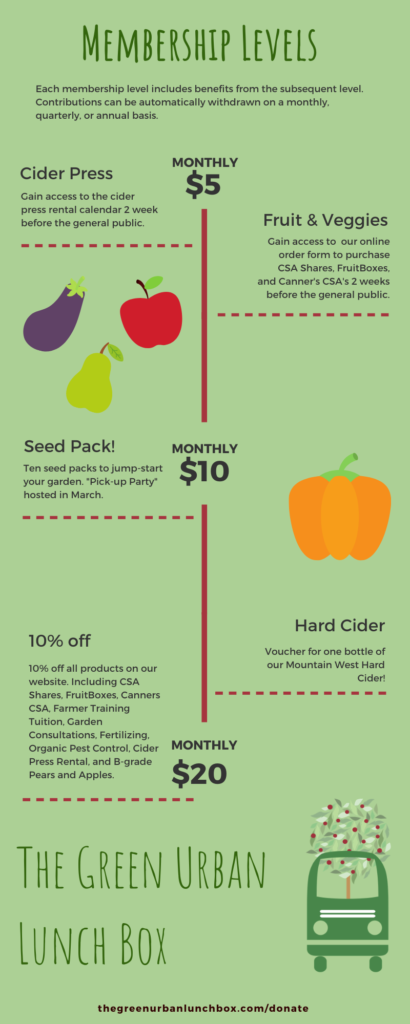How Can We Help?
Donor Membership Levels at the Green Urban Lunch Box
Donor Membership Levels
Patrons can donate to the Green Urban Lunch Box directly on the website by signing up to donate one-time, monthly, quarterly, annually or to become a Green Urban Lunch Box Member. For all gifts over $120 annually, or $10 or more monthly, the Green Urban Lunch Box would like to offer their appreciation and an invitation to become more involved in their organization. There are three membership levels, $10, $20, $40 monthly donations. Each level of membership receives a different level of benefits. See the following infographic for more information on what each level has to offer. Insert 13_Membership Levels Infographic image
The first thing GULB tries to accomplish after receiving a monetary donation is clarify exactly which program the donor wishes to help, this way the funds can be allocated accurately. Having an up-front understanding from both sides how the donation will be utilized is a best practice that GULB has found very helpful, as it sets up a solid relationship for future partnering.
The second thing to consider is acknowledgment. GULB wants to make sure that their donors know how much their contribution is appreciated, and that this is done in a timely manner. An example of this is when somebody signs up their fruit tree to be harvested, and they choose to sponsor their harvest. When they select that option on the acuity scheduling platform, the FruitShare coordinator is able to see that on their online form, and send out a thank you email immediately.
GULB recognizes donors in the weekly newsletter that contains a “Donor of the Week” segment. This segment either highlights the person or organization, or if the donor wishes to remain anonymous another thank you card is sent.
Finally, GULB reports back to the donor on the impact of their gifts on GULB’s mission. This is usually done at the end of the season when all of the harvest data is collected in Salesforce, where the annual reports can be made.



